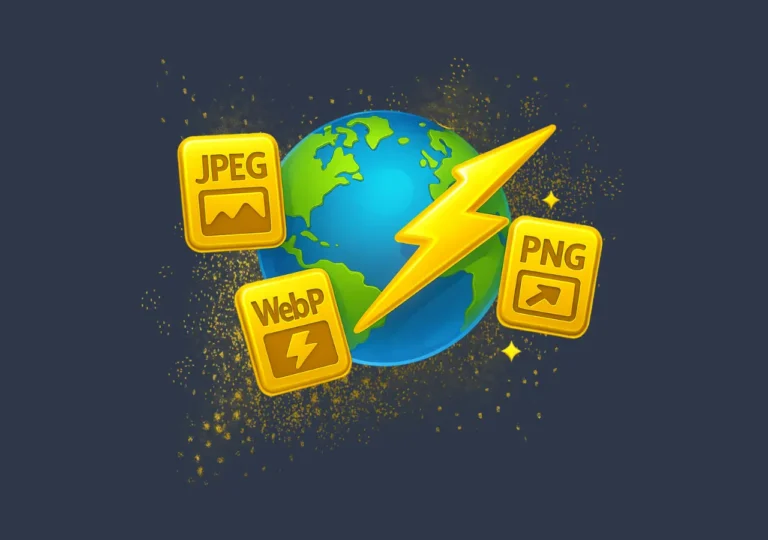
Start Smart: Niche, Goals, and the Minimal Setup 🚀
Pick a clear niche and set a single measurable goal: 1,000 visitors in 90 days. It’s ambitious but doable when you stick to repeatable actions and keep things lean. Begin with a lightweight WordPress install on a budget host (shared hosting or a small VPS works fine). Keep the setup tidy: a fast theme, essential plugins, and a simple logo are enough — don’t overdesign, speed wins.
- Essentials: domain, hosting, SSL, light theme
- Quick wins: caching plugin, image compression, lazy load
- Minimum content: 5 pillar pages + 3 short posts to start
Domain and branding should be direct and memorable. If you write about beginner running, pick a name that says “running for beginners,” not something artsy and obscure — clarity helps readers and search engines. Decide a tiny marketing budget ($20–$50/month) for early amplification and commit to a publishing cadence. Small steps, repeated, beat big scattered efforts. Celebrate the first tiny wins — they matter more than you think. 🎉
The 90-Day Content Roadmap (Week-by-week plan) 📅
Split the 90 days into three 30-day phases: Foundations, Traction, and Scale. Each week stacks 2–3 tasks: research, write, polish, publish, then promote. The first month builds authority and internal linking (pillar pages, useful tutorials). Month two focuses on distribution — communities, guest posts, SEO tweaks. Month three ramps paid tests and automation so each new post earns more views with less manual work.
- Week structure: 2 posts/week — one long guide + one short actionable piece
- Use templates and briefs to speed writing
- Repurpose content into social snippets and short clips
Follow a simple weekly cadence (research, write, add visuals & SEO, publish, then amplify). Consistency beats perfection — aim for steady, helpful posts that match reader intent and solve a problem. Add internal links from new posts to pillar pages so search engines and users find the best material first. 🔗
30/60/90 Milestones — A Practical Checklist 📊
Use milestones as a scoreboard. Track progress weekly and run tiny experiments to see what gets traction — a Reddit post, a short paid test, or a Twitter thread. Double down on what performs.
- Days 1–30: Foundation — setup, publish 5–8 posts ( with AUTO-POST-SEO plugin 25-40), connect analytics → 100–300 visitors/month
- Days 31–60: Traction — outreach, community shares, SEO tweaks, publish 8–12 posts (with AUTO-POST-SEO plugin 40-60) → 300–700 visitors/month
- Days 61–90: Scale — paid boosts, repurposing, automation, publish 12–18 posts (with AUTO-POST-SEO plugin 60-90) → 1,000+ visitors/month
Keep a simple spreadsheet or tracker for sessions, top landing pages, and query impressions. These quick signals tell you where to iterate. Small, repeatable plays add up to momentum. ⚡
Automation and the AUTO-POST-SEO Plugin — Time-saving gold ✨🤖
Automation returns hours back to you. The AUTO-POST-SEO plugin helps produce drafts, titles, and SEO meta so you can focus on distribution and polish. It works best as a friction-reducer: use it to generate a structured first draft, then edit the voice and add real examples.
Install steps are straightforward: upload the plugin ZIP in WordPress, activate, and start the trial. The plugin integrates with your site categories and produces an initial draft with title, meta tags, and structure ready for manual refinement. Use the trial to test whether the drafts save you time — most people see the value fast. 🧰
Using AUTO-POST-SEO Day-to-Day — A Simple Workflow 🛠️
Work with the plugin like an assistant: pick a category, write a clear brief (short is okay), then produce a draft to edit. The clearer the brief, the better the output. After the draft appears, refine headings, add internal links, set a featured image, and polish the meta description.
- Select a site category
- Choose language and topic
- Provide a brief with structure/style notes
- Start generation and edit the draft
Connect OpenAI with an API key in the plugin settings (stored safely) so generation runs smoothly. When a draft is ready, you’ll get a title, meta tags, and a publish button — edit, add visuals, then publish. Treat the generated content as a head-start, not a finished product. That blend of automation + human polish is where speed and quality meet. ✍️
SEO & Content Optimization: Basic but Powerful Moves 🔎
Organic traction needs content that answers intent and on-page signals that search engines understand. Use plugin output as a starting point, then tidy headings, add internal links, craft a compelling meta description, and choose a good featured image. Pair the plugin with Yoast (or similar) for a quick audit and tweak suggestions.
- Title: include primary keyword, keep under 60 chars
- Meta description: 120–140 chars, compelling
- Headers: H1 for title, H2/H3 for subtopics
- Images: compressed, alt text with keywords
- Internal links: 2–3 pillar pages
Don’t skip schema and breadcrumbs — small extras that can lift CTR from search. AI-assisted drafts are fine when you add human examples, local knowledge, and actionable steps for readers. That’s the difference between a bland draft and something that actually helps. 🔧
Promotion, Repurposing & Low-Cost Amplification 💸
With a steady content pipeline, move into promotion. Focus on where your audience hangs out: niche forums, Reddit subs, Facebook groups, LinkedIn communities, or Q&A sites like Quora. Share short, useful excerpts rather than just links — add value first.
- Tiny paid tests: $5–$20 on social ads to surface what resonates
- Repurpose long posts into Twitter threads, short videos, and LinkedIn posts
- Create an email welcome sequence (welcome + top posts) to retain early visitors
- Guest post on niche blogs to trade traffic and links
Automation tools (including AUTO-POST-SEO) free up time so you can do outreach and partnerships. Earned shares beat ads over time, so treat paid boosts as experiments to inform organic focus. Keep the messaging helpful and human. 🤝
Measure, Iterate, and Scale — Metrics to Watch 📈
Install Google Analytics (GA4), Search Console, and use a simple rank tracker or spreadsheet. Review these weekly to spot trends and decide what to rewrite, promote, or prune. If a post underperforms, tweak the title, improve the meta, add FAQs, or merge thin posts. If one performs well, repurpose it and amplify further.
- Primary KPIs: visitors, organic sessions, returning users
- Engagement KPIs: time on page, pages per session, bounce rate
- Growth KPIs: email subscribers, social shares, backlinks
Run 1–2 small paid tests each month and double down on channels with positive ROI. Keep an experimentation log — what you tried and the results — so patterns become obvious. Measurement tells you where to invest. 📊
Final Checklist & Tiny Mindset Shifts (Closing Notes) 🌱
Repeatable routines win: write, publish, promote, measure, repeat. Use AUTO-POST-SEO to cut friction in the drafting stage, then polish by hand and push content to where readers are. Be patient but relentless — 90 days is enough to hit 1,000 visitors if you stay consistent, learn fast, and iterate.
- Weeklies: 2 posts/week, 3 promotion actions per post
- Monthly: review analytics, run one paid test, repurpose top posts
- Automation: use drafts and SEO meta generation, always polish manually
Embrace small wins — first 100 visitors, first subscriber — they build confidence and momentum. Expect a few typos or bumps (definately fixable), keep your voice, stay helpful, and let steady effort compound. One consistent drop at a time grows into a stream. 🌊✨
Resources & Tools Mentioned
- WordPress (free)
- AUTO-POST-SEO plugin (3-day trial, then subscription options)
- Yoast SEO (or similar)
- Google Analytics & Search Console
- Free image tools (Canva, TinyPNG)
Quick Pricing Note about AUTO-POST-SEO
The plugin offers a 3-day free trial. Post-trial you can choose monthly, yearly, or a lifetime license via the plugin’s Update tab. An affiliate/partner program exists for those who want to share the tool. The plugin’s demos show full posts generated with it and polished with Yoast — helpful if you want to see the workflow in action.
Parting Encouragement
Start today, even if it isn’t perfect. Use automation to reduce friction, but keep the human touch that readers actually respond to. The first 1,000 visitors are the hardest, but systems and steady effort turn that steep climb into a gentle slope. Onward — publish, promote, iterate. 🚀
❓ FAQ: 90 Days to 1,000 Blog Visitors
Focus on one niche, publish consistently, and promote smartly. With 2 posts per week, basic SEO, and some outreach, reaching 1,000 visitors is realistic within 3 months.
You only need a domain, hosting, SSL, a lightweight WordPress theme, and a few plugins. Keep it simple and fast — speed and clarity matter more than fancy design.
Start with 5 pillar articles and 3 shorter posts. Then add about 2 posts per week — one long guide and one shorter actionable piece. Consistency builds trust and SEO traction.
Divide it into 3 phases: Foundation (setup + first posts), Traction (promotion + SEO tweaks), and Scale (automation + paid tests). Each phase builds momentum step by step.
Automation saves time. The AUTO-POST-SEO plugin helps draft posts, titles, and meta tags. Use it as a head-start, then polish manually to keep content human and engaging.
Choose a category, write a short brief, and generate a draft. Then edit the output, add internal links, set images, and refine SEO meta. Treat AI as an assistant, not a replacement.
Use clear titles under 60 characters, compelling meta descriptions, structured H1–H3 headings, compressed images with alt text, and 2–3 internal links per post. Schema and breadcrumbs also help.
Share posts in niche forums, communities, and groups. Repurpose content into social snippets. Run tiny $5–$20 ad tests to see what resonates, then double down on what works.
This article was prepared using the AUTO-POST-SEO plugin






